Recent Articles
Popular Makes
Body Types
2018 Mini Cooper S vs. 2018 Volkswagen GTI: Which is Best?
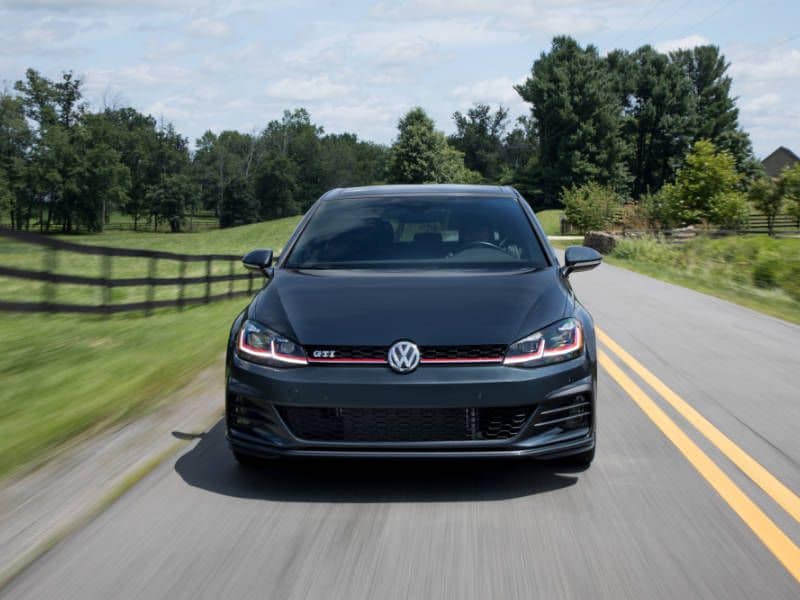
2018 Golf GTI front ・ Photo by Volkswagen
To be specific, this is a comparison of the 2018 Mini Hardtop Cooper S versus 2018 Volkswagen Golf GTI, but you know what we mean, right? Two hatchbacks with special appeal to those who like some driving excitement to go with practicality, city-friendly sizing, and cool European cachet.
Both cars exist in that rare territory between mainstream and premium. Not quite a BMW or an Audi, but pricier and posher than, say, a Honda. Selecting one over the another is like choosing between two people, they each have their own characters. As we go into more depth, perhaps that decision will be easier to you, the interested buyer.
Pricing and Trim Levels
The 2018 MINI Hardtop Cooper S starts at $26,050 for the 2-door version, and the 4-door version begins at $27,050. Standard equipment now includes a rearview camera and rear parking sensors.
The 2018 Volkswagen Golf GTI starts with S trim at $27,265, SE trim from $31,320, and the top Autobahn trim begins at $35,920. All versions now have LED daytime running lights and taillights, while the SE and Autobahn also have LED headlights.
It could be argued that they’re both on the pricey side for what they are, and we are calling this category a tie because although the Volkswagen GTI is more expensive, it’s a bigger car with more equipment in the higher trims.
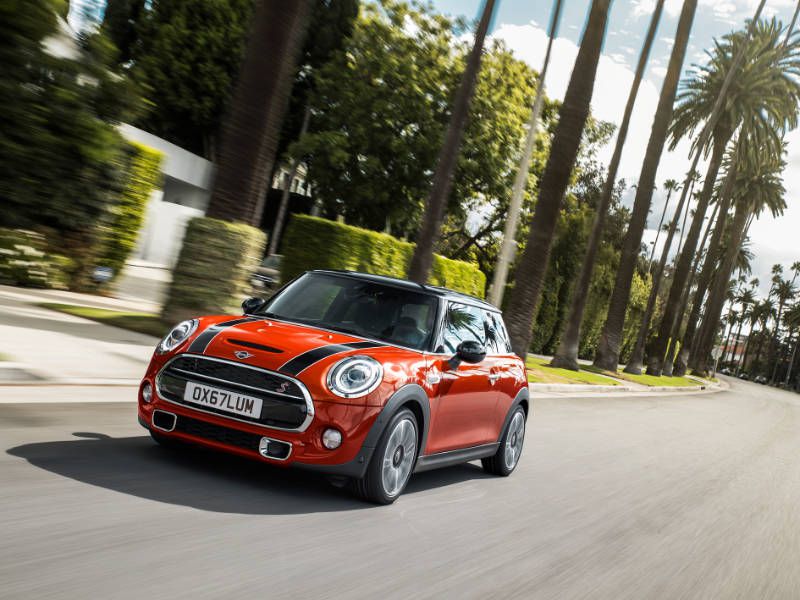
Photo by MINI
Options
Mini makes a point of offering many ways for buyers to personalize their cars, from contrasting paint on the roof to different designs of alloy wheels. An automatic transmission is $1,250, and $1,500 gets one with steering wheel-mounted paddle shifters.
The head-up display in the Cooper S is a little screen on top of the dashboard rather than a projection onto the windshield. However, Volkswagen doesn’t have any such item available in the GTI. The automatic option is cheaper, though the DSG is available at another $1,100 in every trim.
In this category, we’re saying this a win for the Mini here because of the sheer choice and the fact that having more equipment in the GTI requires going up a trim level or two.
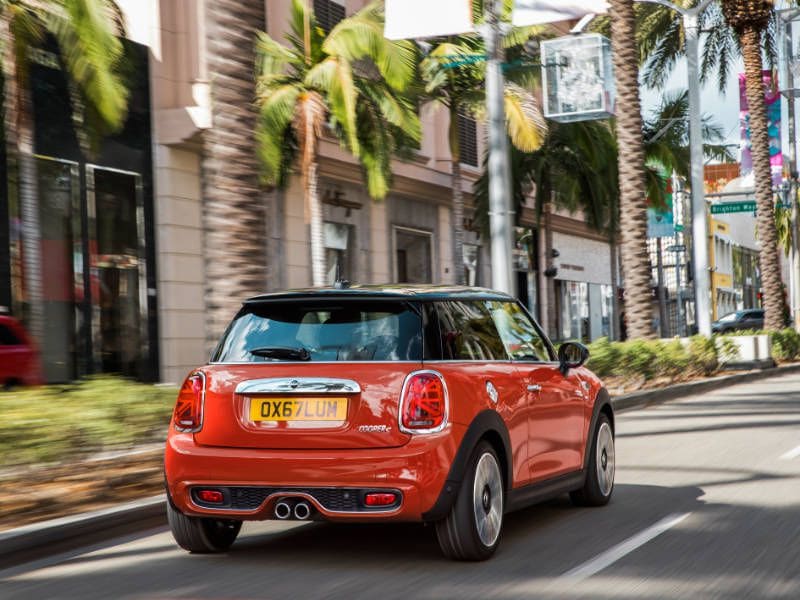
Photo by MINI
Engines and Transmissions
Both cars are powered by turbocharged 2.0-liter/4-cylinder engines and both are front-wheel-drive.
The unit in the MINI Cooper S develops 189 hp and 207 lb-ft of torque with a 6-speed manual transmission is the standard, or there’s an optional 6-speed automatic.
The Volkswagen GTI comes from the factory with 220 hp for 2018, whereas in previous years, buyers had to pay extra for a Performance package to get that output. Maximum torque is 258 lb-ft, and it also comes with 6-speed manual transmission as standard. The automatic option is VW’s 6-speed DSG setup with shift paddles mounted under the steering wheel to provide more involvement.
More power means a win for the Volkswagen GTI here.
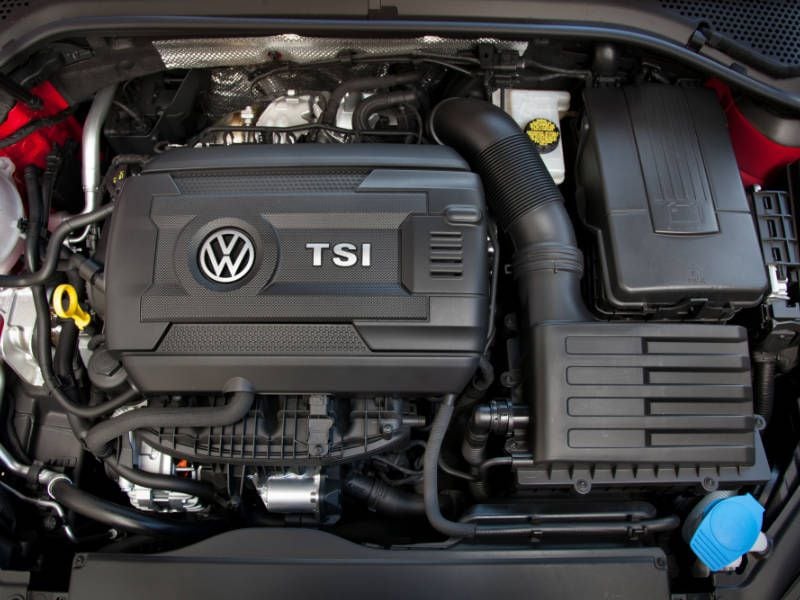
Photo by Volkswagen
Fuel Economy
Using figures from the Environmental Protection Agency (EPA,) the MINI Cooper S with the manual transmission achieves 23 mpg city, 32 mpg highway and 26 mpg combined. Bring the automatic into the mix and those figures improve to 25/32/28 mpg. That’s irrespective of how many doors are involved.
The Volkswagen GTI returns 25/33/28 mpg with the manual transmission, and the automatic version manages 24/32/27 mpg. Somewhat unusual, since automatics these days are generally considered to be the more efficient of the two systems.
For providing comparable fuel consumption while still delivering greater power, the Volkswagen GTI takes the win in the fuel economy category.
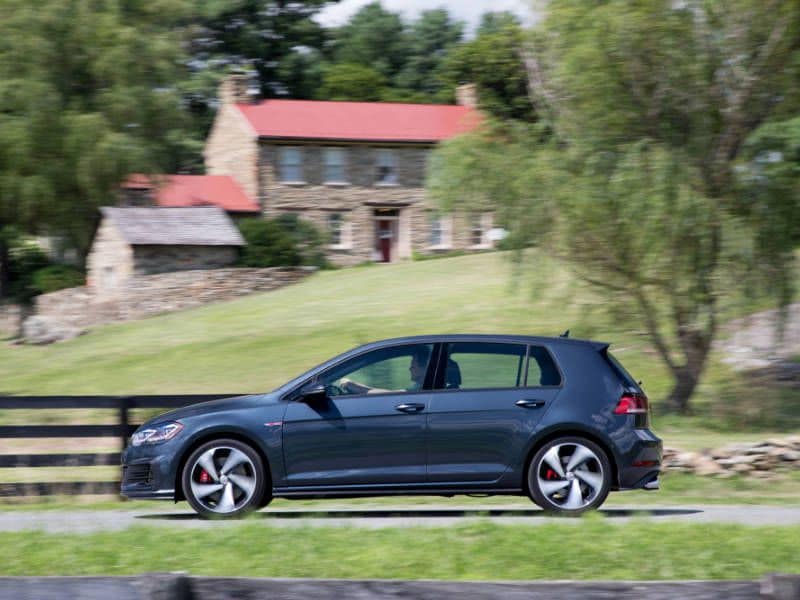
Photo by Volkswagen
Stand-out Features and Technology
An optional Active Driving Assistant in the MINI Cooper S provides adaptive cruise control and automatically engages or dips the headlights’ main beams. The Mini also offers a 12-speaker/410-watt Harman Kardon sound system, which we tend to like more than the Fender-branded (made by Panasonic) setup in the GTI’s Autobahn trim.
The Volkswagen GTI has adaptive LED headlights (that move with the steering to illuminate corners quicker) as standard equipment in the SE and Autobahn. These are a $1,000 option in the Mini. In order for buyers to have adaptive cruise control with forward-collision mitigation, it means stretching to the Autobahn model. The SE and Autobahn also have upgraded brakes from the Golf R.
All these variables made us call it a tie between the two here.

Photo by Volkswagen
Handling
Here is the other side of the performance aspect that separates these cars from the ho-hum mainstream.
Both the Volkswagen GTI and Mini Cooper S have an electronic limited-slip differential to make sure the front wheels behave themselves. It’s really a simulation using subtle amounts of braking at each wheel, but cuts down on torque steer (squirming under acceleration) and understeer (where the front end won’t obey steering inputs to the proper degree and washes wide.)
On a mountain road with many different kinds of corners, the quick steering and lively suspension of the Cooper S comes into its own. The GTI is slightly softer, which means the Mini takes this round, but not by much.
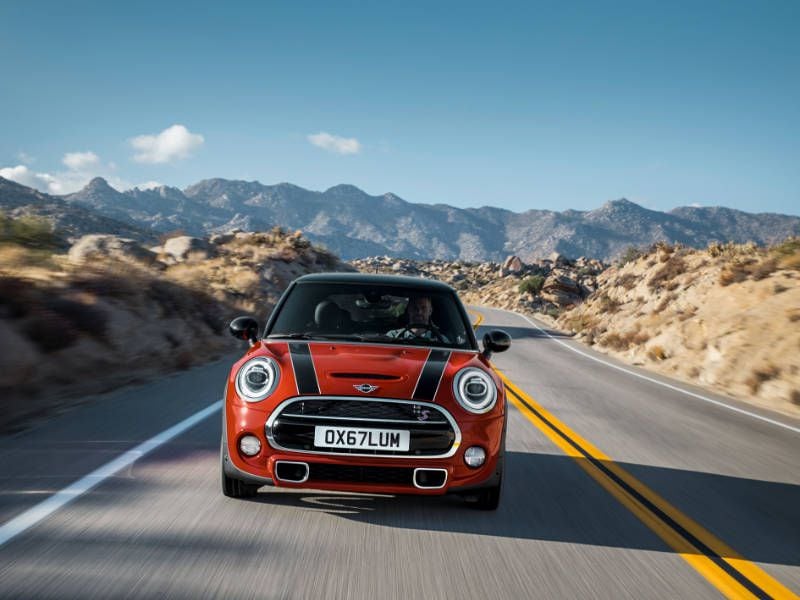
Photo by MINI
Exterior Design
The Mini offers 2-door and 4-door styles, and for sun lovers, convertible options. The Volkswagen GTI comes solely in 4-door form (the company discontinued the 2-door version a while back.)
This third-generation Mini doesn’t look so different from its 2001 ancestor, which was a pastiche of classic British Mini styling with a nod to Aston Martin around the grille. The great thing about the turbocharged S is that it has a cool hood scoop.
The VW GTI has morphed over seven generations from the first Golf model (whose lines were created by design genius Giorgetto Giugiaro,) but the intention is essentially the same - timeless, gimmick-free styling that’s utilitarian but quietly classy.
Subjectivity to style makes this section a tie.
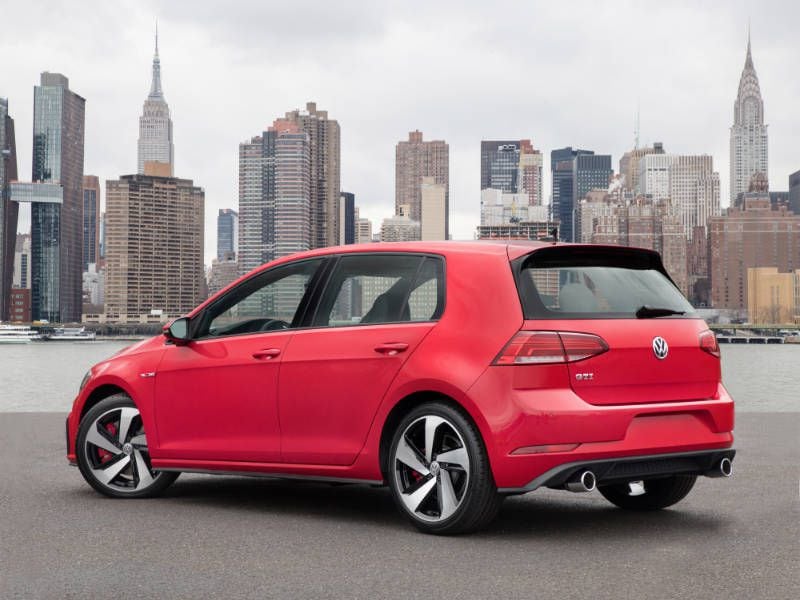
Photo by Volkswagen
Interior Design
The Mini Cooper S might be trying a bit too hard in some people’s eyes, with that huge central display, retro/aircraft-style switches, and an odd-looking fuel gauge. The overall effect is busy, which is appealing to some people.
The Volkswagen GTI is decidedly more somber, which might appeal to other tastes that are turned off by the business of the Mini's displays. Understatement can be a virtue when living with a car for several years. The cabin is enlivened a little by the plaid cloth seats, which are almost iconic in a car with this badge. The manual version also comes with a golf ball-design shifter, another homage to the GTI’s pedigree.
Once again, this has to be a tie as the choice comes down to personal taste.

Photo by MINI
Comfort
In terms of comfort, we’re not just talking about the seats here although we’d give the nod to the Volkswagen GTI in that respect. There’s also the ride quality to consider, and how the suspension reacts to bumps in the road.
The Mini is known for being on the firm side, whereas the GTI is controlled yet subtly cushioned. The adaptive suspension in the Autobahn trim is even more versatile. Take the same 5-hour drive in both cars and you’ll probably be more tired after the Mini, especially once the higher level of cabin noise is also factored in.
Regarding rear passengers, the GTI wins yet again because of its extra space. It’s roomy not just in comparison to the Mini, but also for its class. The clear winner here for overall comfort is the GTI.
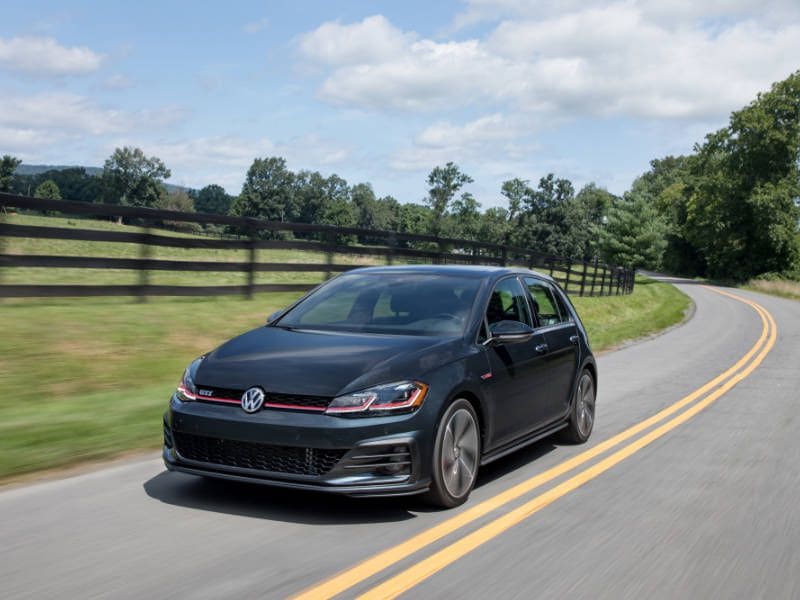
Photo by Volkswagen
Safety Ratings
The National Highway Traffic Safety Administration (NHTSA) gave the Mini Cooper an overall score of four stars out of a maximum of five. The Insurance Institute for Highway Safety (IIHS) awarded the Mini top scores of Good in most categories but hasn’t made it a Top Safety Pick.
The Volkswagen Golf GTI received the full five stars from the NHTSA, and was named a Top Safety Pick by the IIHS with Good scores in most major categories, but took a second-best rating of Acceptable in the passenger-side small front overlap impact test.
All in all, though, this section is another clear win for VW.

Photo by Volkswagen